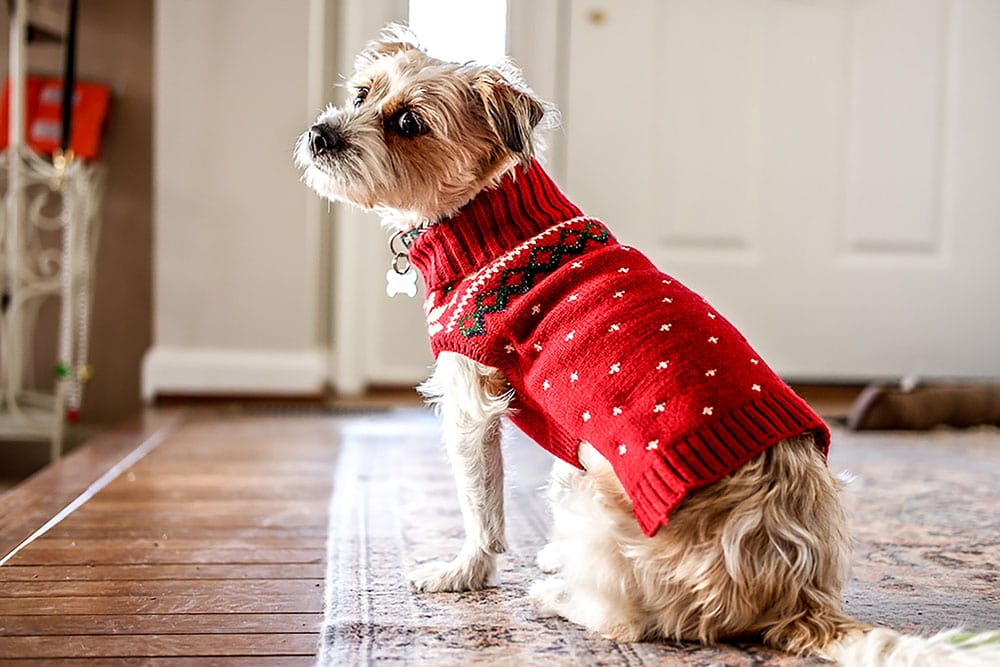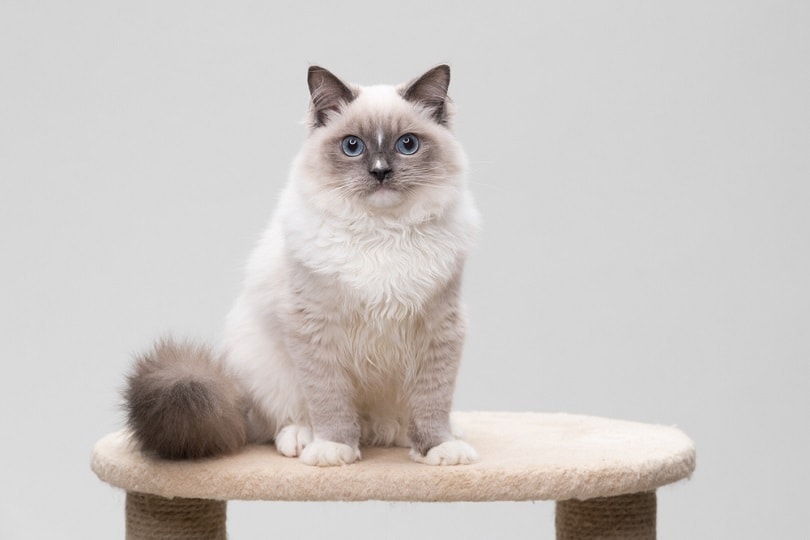How to Train a Maine Coon: Step-by-Step Guide
By Ashley Bates
Updated on
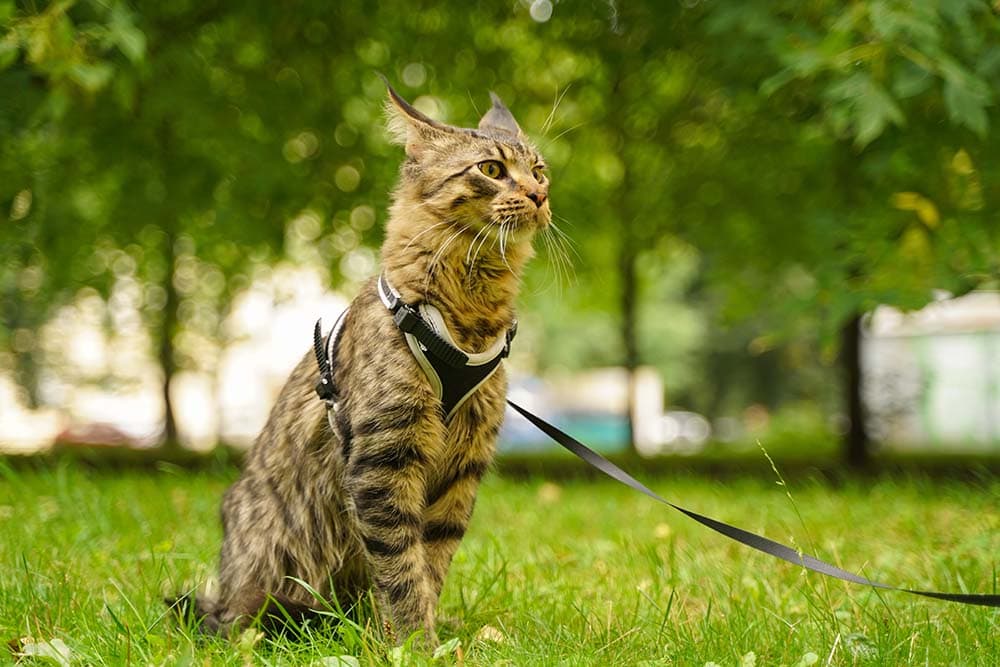
Click to Skip Ahead
Maine Coons are relatively popular purebred cats with keen intelligence and a ton of personality. These gorgeous kitties are capable of a lot beyond litter training. But how do you get started with advanced tasks?
Let’s start by saying that your Maine Coon is more than capable of training. Follow along for how to get started with the journey.
Misconceptions About Cat Training
Cats are notoriously hard to train if you ask most people. But is the myth really true? It is typical that felines are more stubborn and independent than our canine companions. These traits can pose an extra challenge when trying to train them to do new things.
But don’t think that that means that your Maine Coon is not completely capable. These fiercely intelligent creatures are capable of learning advanced training, even more so than some other breeds. There is a reason why they’re known for being the canines of the feline world.
Potty training should be a cinch, but more advanced training can take time and patience. Here are a few training areas, along with tips on getting the job done.
Potty Training Your Maine Coon
We have to say when it comes to cats, these critters get bathroom habits down in no time. Even kittens who have a little longer time catching on, still use the litter box with flying colors. If you are litter-training your kitten, you might be surprised to see that they have formed a permanent habit after showing them the litter box two or three times.
1. Limit the Space
When you first bring home your Main Coon kitten, you won’t want to give them free rein of your home right away. After all, little kitties are in a brand-new environment, and it’s hard to remember where everything is.
Instead, limit their range to a single room of the house unless you are directly supervising them. Give them access to a litter box. That way, they aren’t roaming around your home, getting lost, and forgetting where it is.

2. Keep Showing Where the Box Is
At first, you’ll have to reintroduce your Maine Coon to the litter box several times before they completely grasp what’s going on. You can even set a timer on your phone to put them in the litter box to see if they need to go.
3. Increase Home Access
Once they seem to tackle knowing where the litter boxes are and being able to go without too much interference from you, they’re ready for step three. You can start to allow them access to other rooms in the home. Even though they know where to find the litter box, they might need a little extra help at first. You could offer a litter box in each room you allow them access to so there’s less risk of an accident.
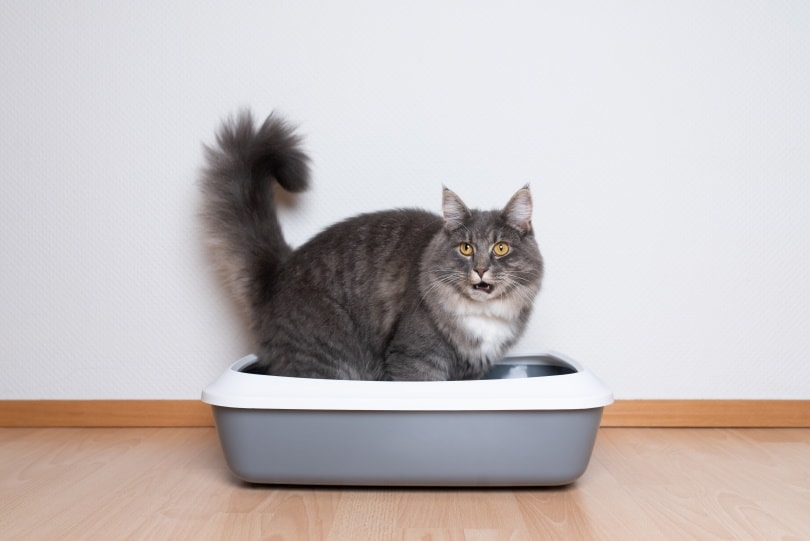
4. Helping a Slower Learner
If your cat seems to be having a little trouble getting it right, you can always keep them in a small enclosure using a fence or door to restrict access to other places. This way they have a direct focus and not a lot of room to run around or places to explore.
When they use the litter box try leaving a small amount of waste behind when you’re cleaning. That way they will constantly smell where they have gone to the bathroom to replicate it in the future.
Command/Trick Training
There’s a negotiation process if you want to get your cat to perform an act. You have to convince your cat that they should do what you request—and that can be tricky. Like dogs, most cats are highly food-motivated. It can definitely work in your favor.
Don’t let your Maine Coon fool you, they will love doing tricks once they get the hang of it. Being very food motivated, you can persuade them to do a lot by simply having tasty favorites on hand.
1. Be Consistent
To learn effectively, you must keep a routine. Your cat isn’t going to learn quickly as training bounces around all over the place. You should try to practice at the same time every day.
Stick to short and positive training sessions. 2–5 minutes is enough as long as you are consistent. Choose a time of the day when your cat has food motivation. Half an hour before their regular mealtimes is ideal. But in any case, try to make consistency part of the plan.
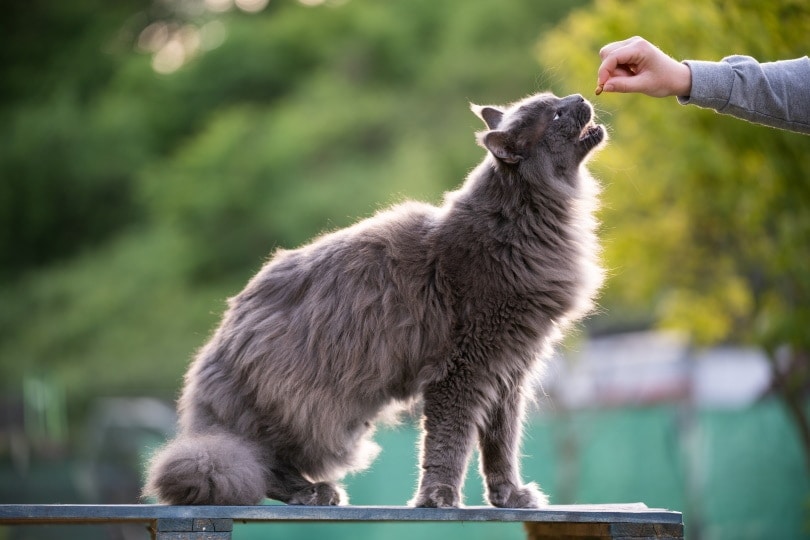
2. Read the Room
It might be easier to tell in some cats than others, but they have to be in the mood for whatever is going on. If you have a particularly moody cat, you want to make sure that they’re up for it before you start any training. A poor attitude at the beginning could lead to failed success.
You should always try to offer the training, but if your cat is resisting majorly, we can give them a little while to calm down or get with it. Also, if certain cats are wound up from time to time, it might not be the best time to start focused training. Just read your cat’s body language to know if they’re ready to learn or if you should wait until later.
3. Keep Sessions Short
In order to keep your cat’s attention effectively, you should keep sessions to 5 minutes or less.
Shorter intervals are perfect to capture your cat’s attention. You want to make sure you stop the session while your cat is still engaged. When it comes to cat training, three 5-minute sessions spread throughout the day work better than one 15-minute session.
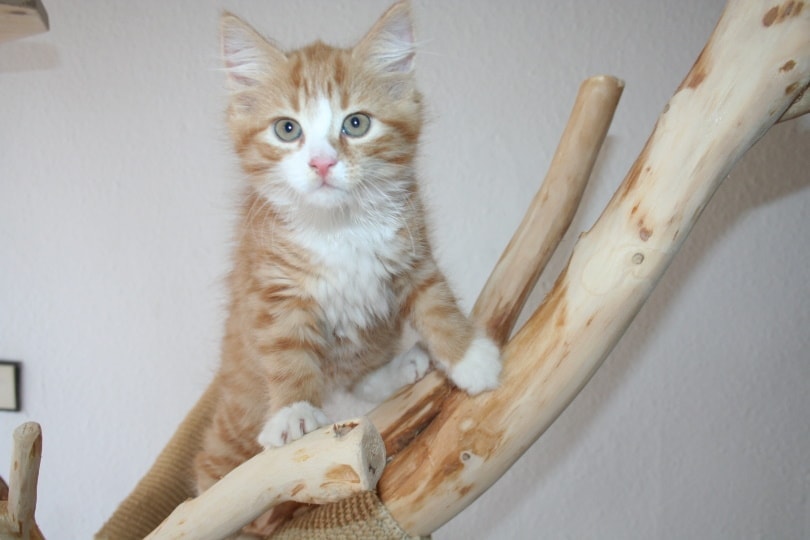
4. Eliminate Distractions
If you have a kitty constantly paying attention to its surroundings, you might have a distraction problem. To avoid these kinds of distractions, ensure you are in a quiet, secluded room, away from the potential chaos in your home.
If you have a single pet household, working with your Maine coon might not be as challenging. However, if you have multiple pets or small children, it can make it a little harder for them to stay focused. Provide a separate space to allow the cat one-on-one training sessions.
5. Try a Single Trick at a Time
Because your cat has a short attention span, it is best to try a single trick at a time. That way, you can entirely focus on one task at hand until they have it down pat. The more you focus on the one trick, the quicker your cat can learn it, and the less they will be confused.
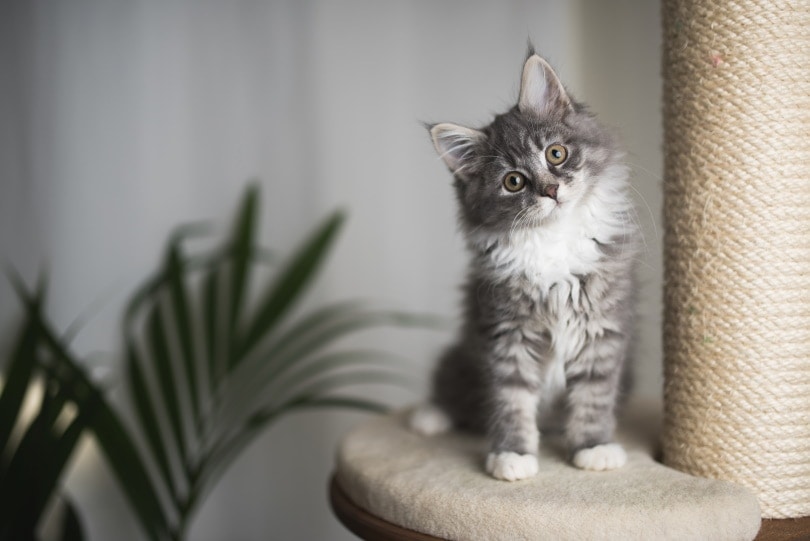
6. Use Lots of Positive Reinforcement
Even though our kitties don’t have the same desire for our attention that a dog might, they still love positive reinforcement from the people they live with. If you’re training your cat, give them lots of praise.
You would be surprised how much cats pick up on your body language and vocal inflection. Your positive encouragement will let them know that’s what they’re doing as wanted and worthy of reward.
7. Repetition Is Key
The quickest way to get your cat to learn anything is by doing it repeatedly. If you have a particular task that you’re working on, repeat the task over and over to help the cat develop the skills and memorize the signal. Once the cat has learned a specific behavior, you can sporadically ask for it, making sure that you randomly reinforce it very well. This helps keep it in your cat’s repertoire as a high-value behavior.
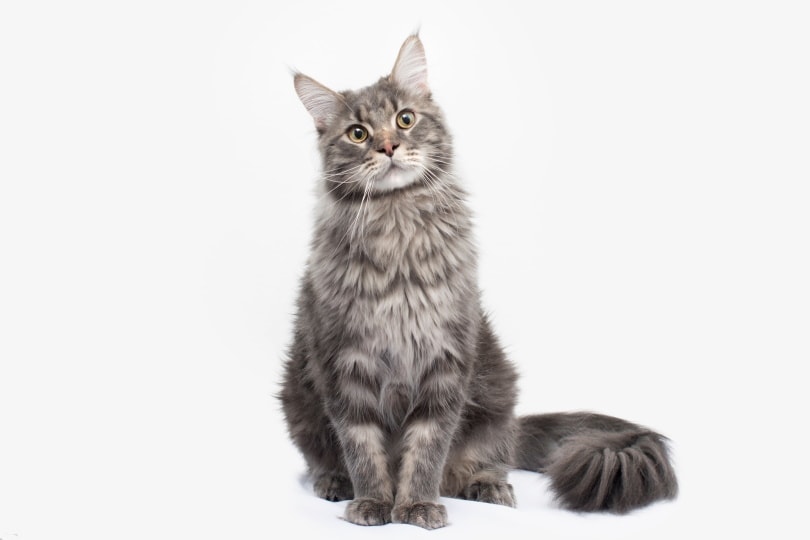
Why Punishments Don’t Work
If you’ve ever had a feline, you know that harsh punishments don’t work with them. Every interaction you have with your cat is practically a negotiation.
Cats can be masters at testing their attitude. So don’t be disheartened if they don’t seem completely willing to play the game. All it does when you punish your cat harshly for not doing what you want is create a fear-based relationship. Fear-based relationships can cause many issues that can snowball into much bigger problems.
If your cat associates being around you with something unpleasant, it could cause a gap in the relationship and other behavioral issues. Some of the issues include destructive behavior, hissing, growling, hiding, and overall change in demeanor when they are around you. It could even cause more significant problems like using the bathroom outside of the litter box.
Final Thoughts
When it comes to training your Maine Coon, the possibilities are endless. Of course, participation does depend on the personality and intelligence level of your cat.
Maine Coons are typically brilliant; some have a very high desire to learn. With their amiable loving nature, they make outstanding candidates for advanced training. Just remember to stay patient and be consistent.
Featured Image Credit: Goldeneden, Shutterstock


